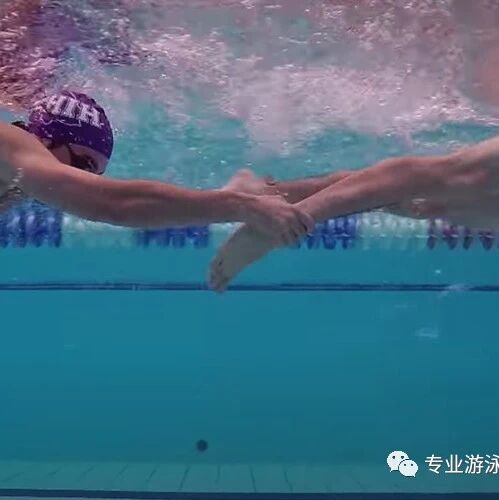Understand your freestyle swimming level—cruising at speeds exceeding 3,000 meters per hour.
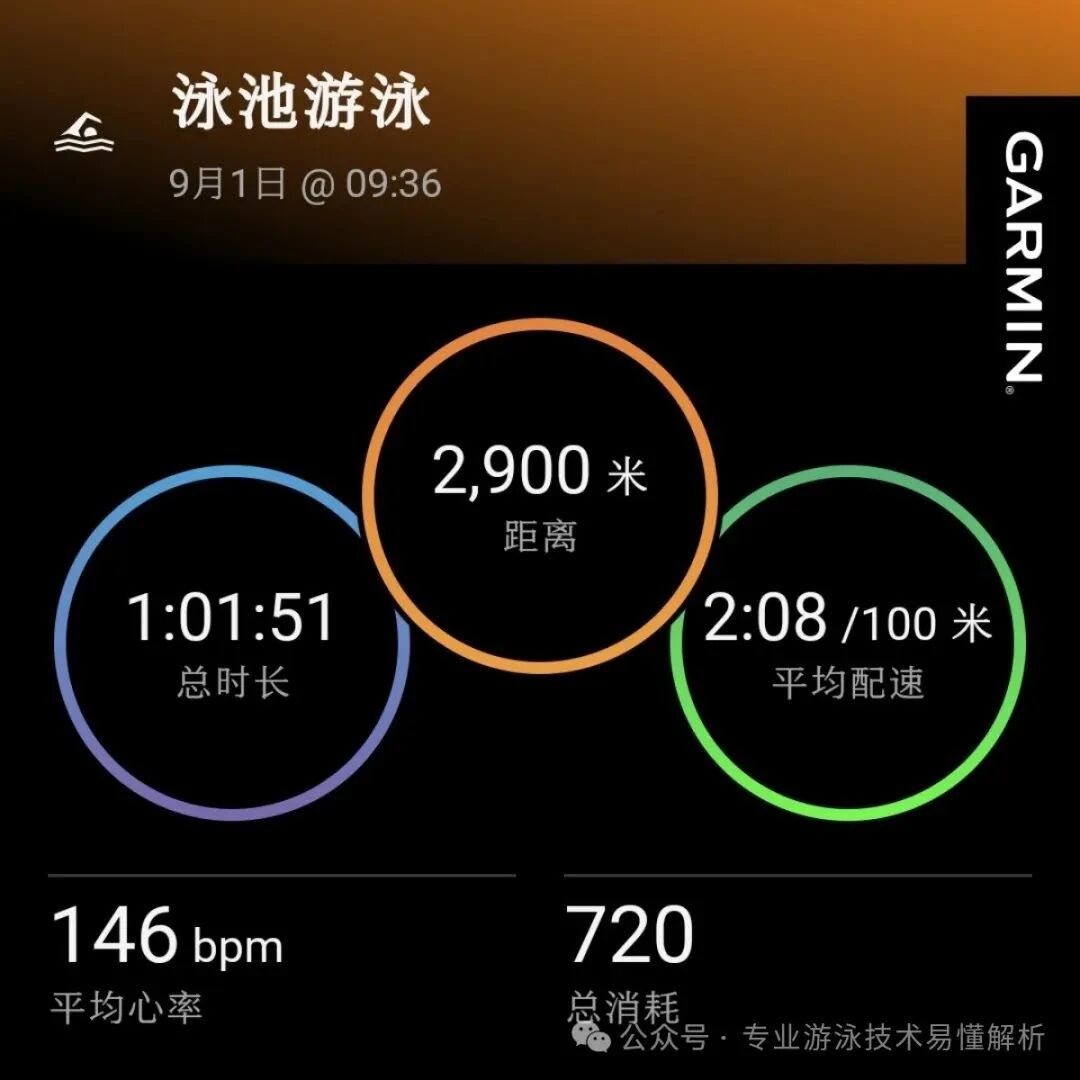
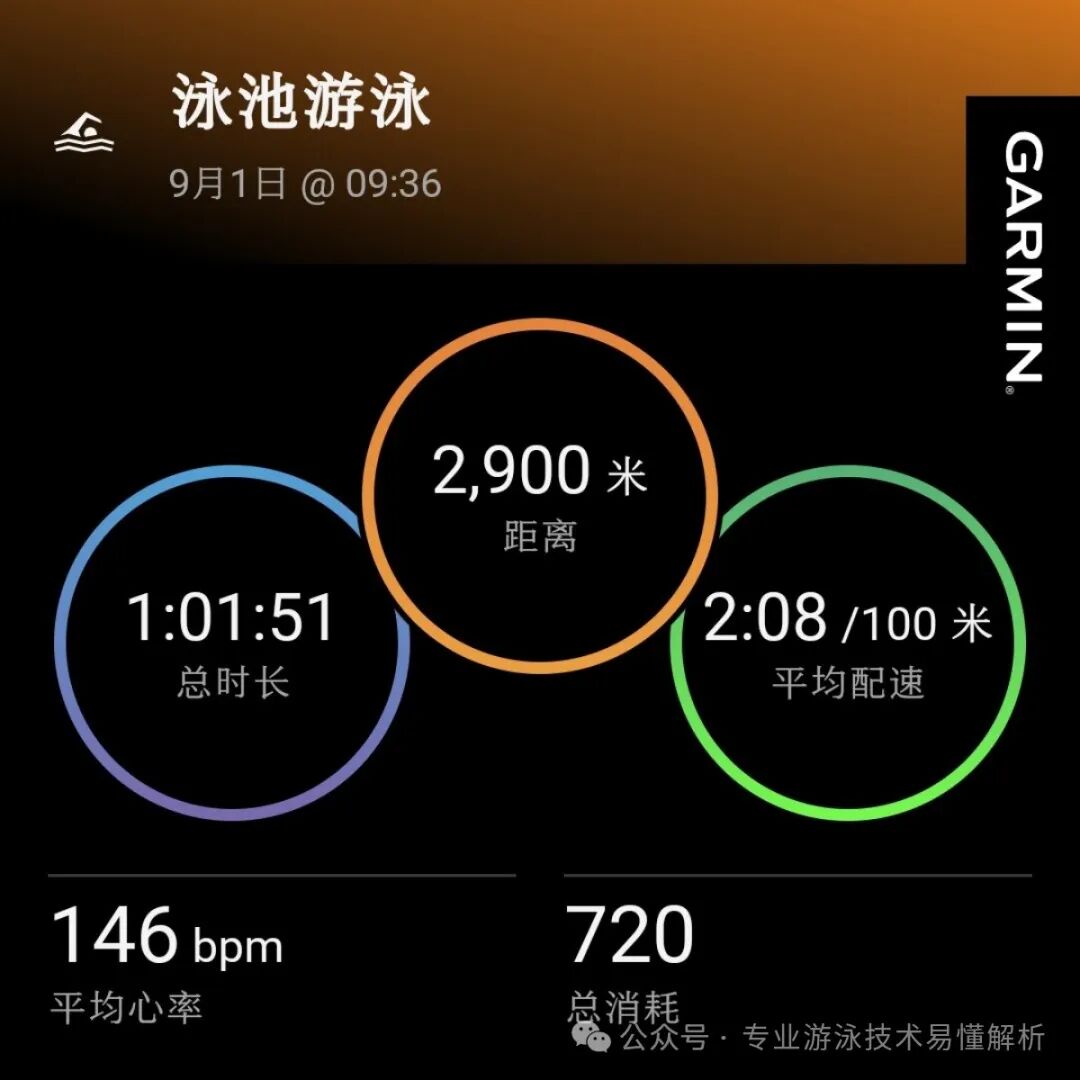
On Saturday, I swam freestyle continuously for 2 hours, and this morning I did another hour of freestyle—mostly at a cruising pace. My arms pushed through the water effortlessly, relying instead on my core to powerfully initiate body rotations that help generate momentum. All the while, I listened to music, letting the relaxed, steady rhythm of my strokes mirror the calm, leisurely stroll I’d take with a birdcage in hand. It was an utterly peaceful and enjoyable experience.
Once you master the effortless and efficient technique of freestyle swimming, you’ll hardly ever swim breaststroke again. For individuals, there’s also a small but compelling reason: freestyle allows you to enjoy listening to music while you swim. This is because bone-conduction headphones deliver noticeably different volume and sound quality—both above and below water—compared to traditional earbuds. With breaststroke, the constant up-and-down motion makes it nearly impossible to maintain consistent audio quality through bone conduction. Meanwhile, wearing in-ear sports MP3 players for extended periods isn’t great for your ears, as they simply can’t match the comfort level of bone-conduction headphones.
Swimming the 100-meter distance in a pace that keeps you under 2 minutes—specifically, 100 meters × (60 minutes ÷ 2 minutes) = 3,000 meters—means covering 3,000 meters in one hour. This serves as an entry-level goal for freestyle swimming. However, in the context of the Full Immersion Freestyle teaching system, the ultimate objective of swimming instruction is to empower swimmers to become their own coaches. To achieve this, swimmers must develop three key abilities: first, the ability to recognize when their technique isn’t quite on point; second, the capacity to assess their own swimming performance objectively; and third, the skill to identify the most effective strategies for personal improvement.
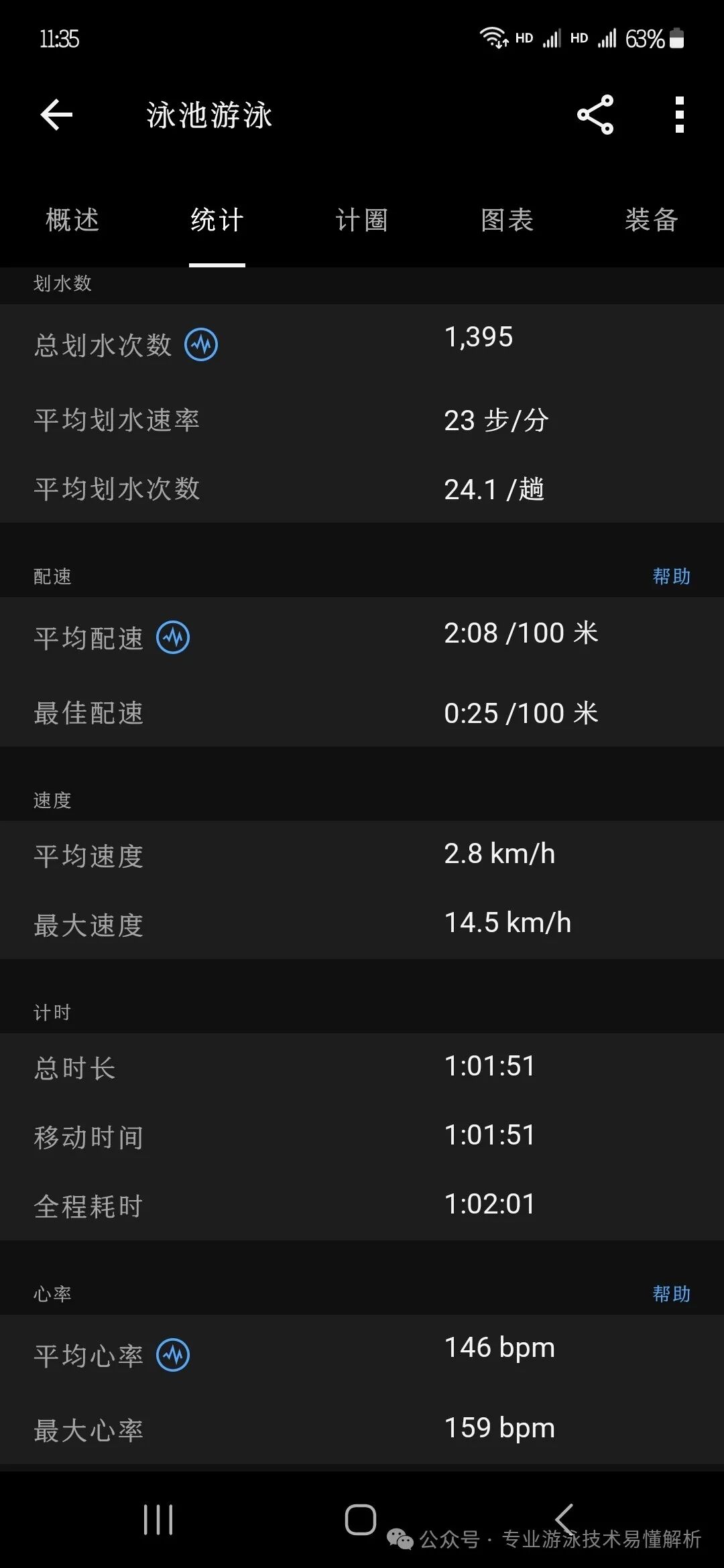
1. To assess swimming ability, first look at how well you glide through the water.
When swimming, it’s better to focus on quietly refining your streamline efficiency rather than competing with others in short sprints. The simplest way to measure this is by calculating your streamline efficiency: total distance swum ÷ total number of strokes. For example, on Sunday I swam 2,900 meters with a total of 1,395 strokes, giving me a streamline efficiency of 2,900 ÷ 1,395 = 2.08 meters per stroke. On Saturday, I covered 5,350 meters using 2,657 strokes, resulting in an efficiency of 5,350 ÷ 2,657 = 2.01 meters per stroke. And on August 24, I swam 3,100 meters with 1,424 strokes, achieving a streamline efficiency of 3,100 ÷ 1,424 = 2.18 meters per stroke.
Of course, the glide effect is related to a swimmer’s skill level, but it’s also directly influenced by height. Therefore, when comparing swimming performance between swimmers of different heights and arm spans, it’s more accurate to evaluate their glide efficiency relative to their body height. For instance, consider a swimmer who stands 1.71 meters tall with a glide of 2.1 meters, and another swimmer who’s 1.83 meters tall with a glide of 2.2 meters. The first swimmer’s glide-to-height ratio is 2.1 ÷ 1.71 = 1.228, while the second swimmer’s ratio is 2.2 ÷ 1.83 = 1.202. Although the first swimmer’s actual glide distance is slightly shorter than the second’s, their stroke efficiency actually surpasses that of the taller swimmer.
From the perspective of fitness effectiveness, you can also compare your stroke count to the corresponding energy expenditure—for instance, if you completed 1,395 strokes while burning 720 kcal. Since energy consumption is directly influenced by your heart rate, this ratio becomes a crucial reference point for swimmers aiming to enhance their sprint performance. After all, maximizing energy burn within a set time frame—and improving stroke efficiency—are essential components of training for competitive sprint swimming.
2. Promptly identify improperly executed movements
Improving your freestyle swimming involves three key areas: reducing drag through body streamlining, building stronger propulsion, and maintaining a smooth, consistent rhythm—each of which corresponds to specific exercises.
Take drag reduction as an example—when swimming, keeping your body rigid in the water and ensuring your lower body doesn’t sink is the most fundamental requirement. Yet, many swimmers struggle with this issue in freestyle: their upper bodies end up frantically paddling while their lower bodies lag behind. At first glance, they may still manage to swim decently—or even feel like they’re “swimming effortlessly”—thanks to their stamina and proper breathing techniques. However, without filming themselves or asking a coach-level swimmer friend to observe them underwater, it’s often hard for them to notice these flaws on their own. This is precisely why so many swimmers hit their first "plateau" in freestyle technique.
I believe this is a false bottleneck—these kinds of barriers, once recognized, can be quickly addressed to significantly improve your freestyle speed. The real bottlenecks, however, are those you’re fully aware of yet still struggle to overcome. These can stem either from inherent limitations, such as natural stamina or explosive power, or from self-inflicted issues, like ingrained bad habits, uneven leg-kicking strength between your left and right sides, or even unconsciously kicking along with the opposite leg while focusing on one side—issues that often require deliberate effort to correct.
For those with natural strengths that act as inherent bottlenecks—such as having significantly better endurance than the average person—they should specialize in long-distance swimming. Conversely, if someone excels in explosive power compared to others, they should focus on sprinting and short-distance races. From a certain perspective, competitive swimming mirrors today’s education system: training comes second; the real priority lies in selection. By identifying naturally gifted individuals early on and nurturing their talents effectively, we can quickly achieve outstanding results. Of course, this process sometimes inevitably involves trade-offs and costs—after all, not everyone selected may receive the right kind of training, and some, despite being chosen, could suffer physical harm or even undermine their innate abilities due to improper or excessive development.
For true swimming enthusiasts, competitive swimming is just one small aspect—keeping fit, nurturing both body and mind, and truly enjoying the pleasure of swimming are the main goals. That’s why it’s essential to focus on understanding your own swimming performance metrics and comparing them to your personal historical records, rather than getting caught up in unhealthy competition with others. For instance: If you notice a significant drop in your glide efficiency, ask yourself—has your stroke form started to break down? Are you maintaining proper body streamlining? Or could it be that your overall physical fitness has declined? Perhaps your stroke frequency per minute has slowed down too much? By reflecting on these factors, you can pinpoint areas for improvement and keep progressing on your swimming journey.
Whether you're swimming competitively or just for fun, it’s essential to develop the ability to recognize your own improper movements. There are three main approaches: first, improving your water skills; second, recording yourself on video or working with a professional coach; and third, evaluating your progress based on data from advanced sports watches or other specialized monitoring devices.
It’s helpful to frequently feel your body gliding through the water while swimming, gradually adjusting your movements, rhythm, and body posture to notice subtle yet meaningful differences—this is a great habit for continuously improving your swimming technique. Selfie videos, however, have their limitations: if you don’t fully grasp a particular movement, simply copying others by rote can easily lead you astray. That’s why it’s often essential to have a professional coach provide guidance from the side. Additionally, make sure to consistently monitor your performance metrics across multiple swimming sessions—ideally, taking time each month to reflect on and evaluate your progress.
3. Identify a direction suitable for self-improvement
Most people exhibit the same improper movements—such as dragging the elbow during the push phase, insufficient horizontal whip of the leg, a loose and unrigid body position while swimming, and inconsistent breathing patterns. Additionally, they often lift or tilt their heads up and down—or even sway them side to side—during the breathing transition. These are all fundamental issues that should be addressed at both the beginner and intermediate stages of freestyle swimming.
To resolve the issue of naturally lifting the elbow high after arm internal rotation while relying on catch-and-pull, simply relax the pushing motion and focus on maintaining a stable angle between your upper and forearm. Keeping the elbow joint at a higher position will effectively address the problem.
To address improper breathing technique during swimming, the key is to get into the habit of exhaling as soon as you enter the water—whether through your mouth or nose, or even starting with your mouth and then switching to your nose. As long as you keep exhaling continuously, you’ll avoid holding your breath, ensuring a steady oxygen supply even for longer swims.
To address head instability during breathing, focus on relaxing your neck. As you breathe, gently rest your head on the shoulder of your forward-reaching arm while simultaneously feeling the sensation of pushing water and subtly opening your mouth to take a breath. Pay attention to lifting your chin slightly upward—avoid raising your forehead—and gradually master the effortless breathing technique where "one goggle remains above water, while the other stays submerged."
When addressing head bobbing from side to side, pay attention to the direction of your palm as you push the water—avoid pointing it outward. Instead, keep your palm facing directly backward or slightly angled toward your body. This ensures that your body moves in a straight line forward during the swim, rather than swerving like a snake.
From a swimming perspective, individuals with height and long arm spans tend to have a higher risk of shoulder joint injuries, likely due to their tendency to stroke with straight arms and their habit of sweeping and pulling through the water.
Improving your freestyle swimming requires consistently increasing your stroke frequency while ensuring that your overall water efficiency remains intact. Overall, the SWOLF score is a more reliable metric to track progress: beginner swimmers typically aim for a SWOLF value between 75 and 80, intermediate swimmers strive for 70 to 75, and elite swimmers usually stay around 60. Achieving these advanced levels hinges on mastering core-engagement techniques—specifically, tightening your core muscles to maintain a rigid, streamlined body position. As you rotate your body during each stroke, let your hips drive the movement of your thighs, which in turn propel your calves. This powerful leg action not only generates strong propulsive force against the water but also efficiently transfers excess energy through your body’s rotation, ultimately enhancing the power of your arm strokes as well.
Imagine, when mastering this powerful technique, swimming freestyle feels like climbing a rope—picture a rope hanging in mid-air, requiring you to pull yourself upward using only your hands. Even though your feet aren’t touching the ground, as your arms grip the rope and propel you upward, your legs first push forcefully against the water, sending that power through your core and straight into your arms, enabling them to climb even faster.
One WeChat official account shares swimming tips, while another focuses on software insights, online resources, and reading experiences.
Thank you for your supportive and encouraging likes, as well as the comments that spark meaningful conversations—and of course, we’d love even more shares and retweets!
Related Articles
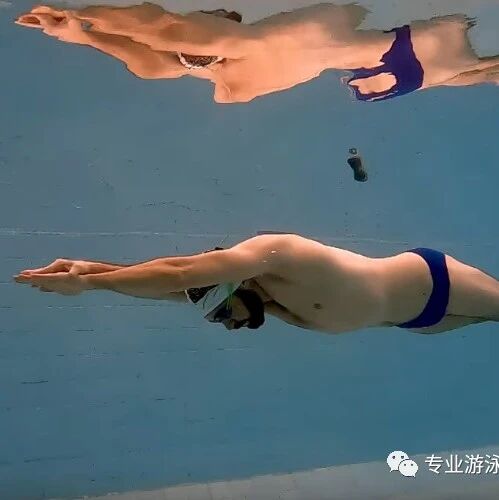
Testing the body-lengthening effect: How can you glide farther through the water?
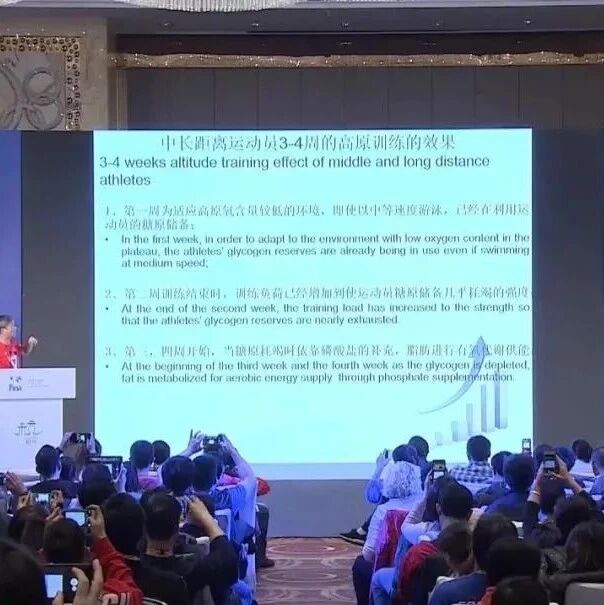
The Road to Championship: Coach Zhu Zhigen's Remarks at the FINA Gold Medal Coaches Workshop
